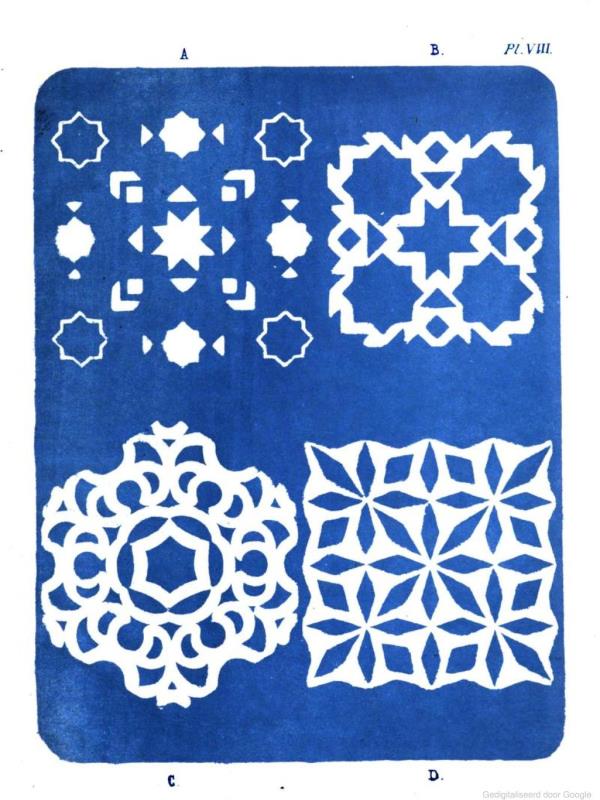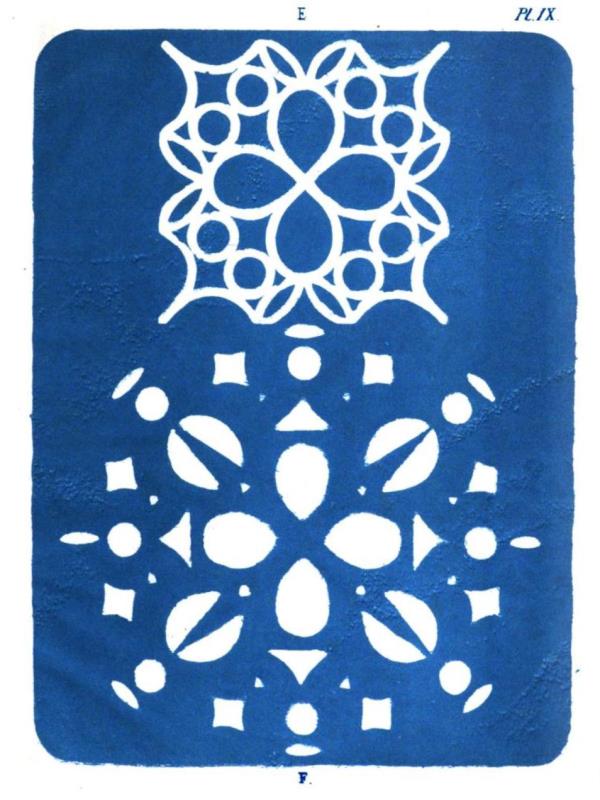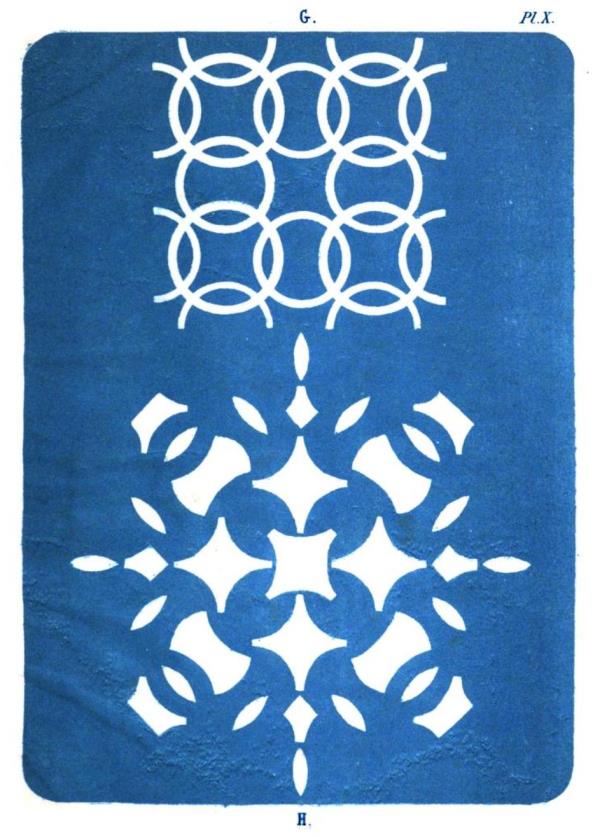| The Public Paperfolding History Project
Last updated 3/12/2025 x |
|||||||
| De Kleine Papierwerkers by Elise Van Calcar: Volume 4 - Het Knippen en Plakken, c1863 | |||||||
| 'De
Kleine Papierwerkers' is a series of four books written
by Elise Van Calcar and published by K H Schadd in
Amsterdam. The date of publication of Volume 4 is unknown
but it is probably in or around 1863. It contains
information about various miscellaneous cut designs and
Ausschneiden und Aufkleben. The four volumes are: Volume 1: 'Wat men van een stukje papier al maken kan: Het vouwen' (What one can make from a piece of paper Folding) Volume 2: 'Wat men uit strookjes papier al vlechten kan' (What one can braid from strips of paper) Volume 3: 'Het prikken' (Pricking). This volume contains no paperfolding content. Volume 4: 'Het Knippen en plakken' (Cutting and Pasting). This page is based on a full copy of the work which can be found online here. This copy appears to be a first edition. **********
********** Analysis Miscellaneous Fold and Cut Designs How to crawl through a square of paper / How to Climb Through a Playing Card
Parts of this passage say, roughly, 'Would you be able to crawl through this little sheet? Come, I will teach you this magic, - fold a square in the middle and cut a strip from the open side as if you were removing it but stop so that the strip stays in place. When the whole sheet has been cut with parallel cuts then you make cuts on the fold that divides the sheet in two. Cut all the strips except the bottom ones, they form the edge - and, behold, the sheet ...turned into a chain through which Henri and Ida could easily crawl.' ********** Vogelkooi (bird cage) This passage seems to be a description of how to make what I call The Paper Cage.
This passage says, roughly, 'Then take another square of paper, fold it diagonally as fig 7. Now bring your two sharp corners to your right corner (fig 8 and 9) until you have a square. Fold this in the middle until you have another triangle (fig 10). Now we cut it from the side with slits ... Now carefully unfold ... put a pin through the middle and carefully draw down the four corners ... We glue the four bottom edges on a sheet of stiff paper of equal size and you have a lovely bird cage.' ********** Het vischnet (the fishing net) This design also seems to be a version of The Paper Cage but using less folds and curved cuts.
This passage, which follows directly on from the one above, says, roughly, 'The fishing net is created in the same way with the difference that the cuts are rounded ... If we fold a square in four and cut off the corners we get a (rounded) edge ... and finally a beautiful fishing net is cut.' ********** Cutting a Hexagon from a Square Fig 11 of Plate 1 shows how to cut a hexagon from a square.
**********
********** Ausschneiden und Aufkleben
**********
********** |
|||||||














